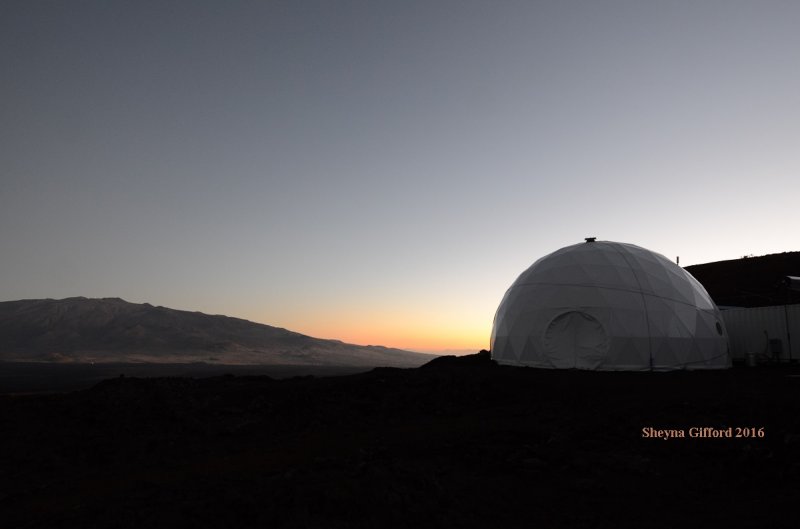Mock Mars Crew Will Return to Civilization Today, After 1 Year in Isolation

After a year living in isolation, six crew members on a mock mission to Mars are returning home today (Aug. 28).
The crew members have been living in an isolated habitat on the bare, rocky slopes of Mauna Loa on the island of Hawaii, as part of the HI-SEAS program (Hawaii Space Exploration Analogue and Simulation), based out of the University of Hawaii. The program is helping scientists to understand how the isolation of a deep space mission would impact human participants.
The mission participants have lived together for 12 months, with limited contact with friends, family and the outside world. The crew is schedule to exit the habitat at 3 p.m. EDT (1900 GMT). This is the fourth and longest HI-SEAS mission to date.
The HI-SEAS habitat is an almost entirely self-sufficient structure, where participants utilize a limited supply of food and other necessities. Any communications between the crew and the outside world experiences a 20-minute delay, to mimic the limitations of communicating with deep space locations. Some of the crew members have been writing blog posts about their experience in the habitat.
HI-SEAS is a NASA-funded program that has been operating since 2012. The duration of its isolation missions have gradually increased, with the first mission lasting just short of four months, the second mission lasting a full four months each, and the third mission lasting eight months. The scientific studies done by HI-SEAS researchers "focus on the need to identify psychological and psychosocial factors, measures, and combinations that can be used to compose highly effective teams for self-directing long-duration exploration missions," according to the HI-SEAS website.
HI-SEAS is currently seeking participants for its next two isolation missions, which will send teams to the mock Mars habitat in 2017 and 2018 for eight months at a time. You can learn how to apply at the project's announcement calling for volunteers here. Applications are due by Sept. 5.
Follow Calla Cofield @callacofield. Follow us @Spacedotcom, Facebook and Google+. Original article on Space.com.
Get the Space.com Newsletter
Breaking space news, the latest updates on rocket launches, skywatching events and more!
Join our Space Forums to keep talking space on the latest missions, night sky and more! And if you have a news tip, correction or comment, let us know at: community@space.com.

Calla Cofield joined Space.com's crew in October 2014. She enjoys writing about black holes, exploding stars, ripples in space-time, science in comic books, and all the mysteries of the cosmos. Prior to joining Space.com Calla worked as a freelance writer, with her work appearing in APS News, Symmetry magazine, Scientific American, Nature News, Physics World, and others. From 2010 to 2014 she was a producer for The Physics Central Podcast. Previously, Calla worked at the American Museum of Natural History in New York City (hands down the best office building ever) and SLAC National Accelerator Laboratory in California. Calla studied physics at the University of Massachusetts, Amherst and is originally from Sandy, Utah. In 2018, Calla left Space.com to join NASA's Jet Propulsion Laboratory media team where she oversees astronomy, physics, exoplanets and the Cold Atom Lab mission. She has been underground at three of the largest particle accelerators in the world and would really like to know what the heck dark matter is. Contact Calla via: E-Mail – Twitter









